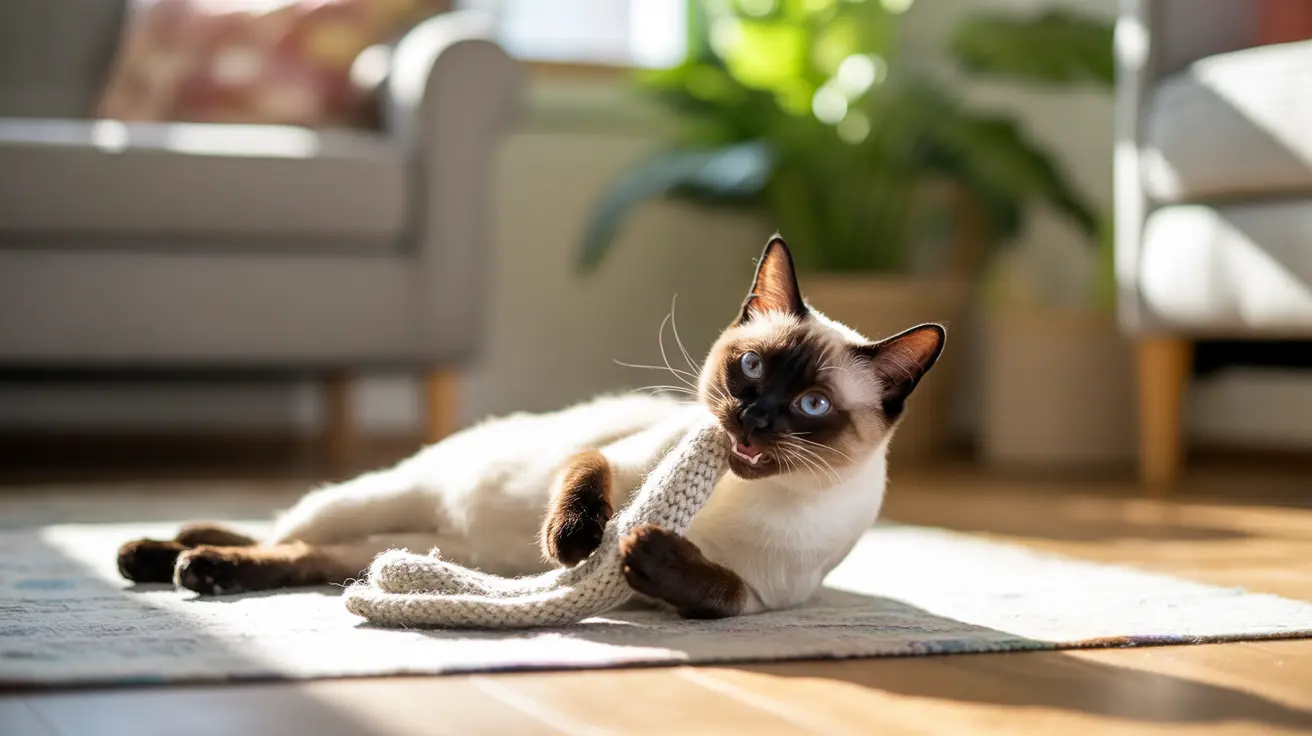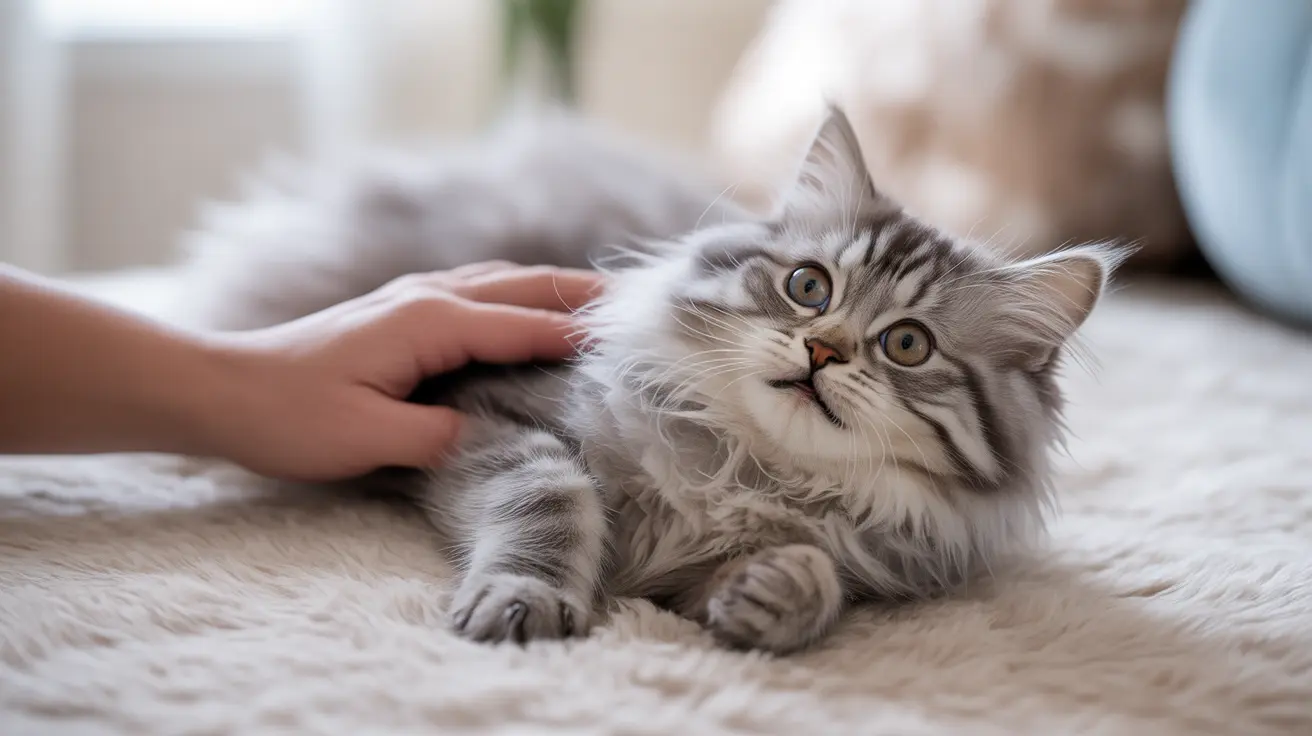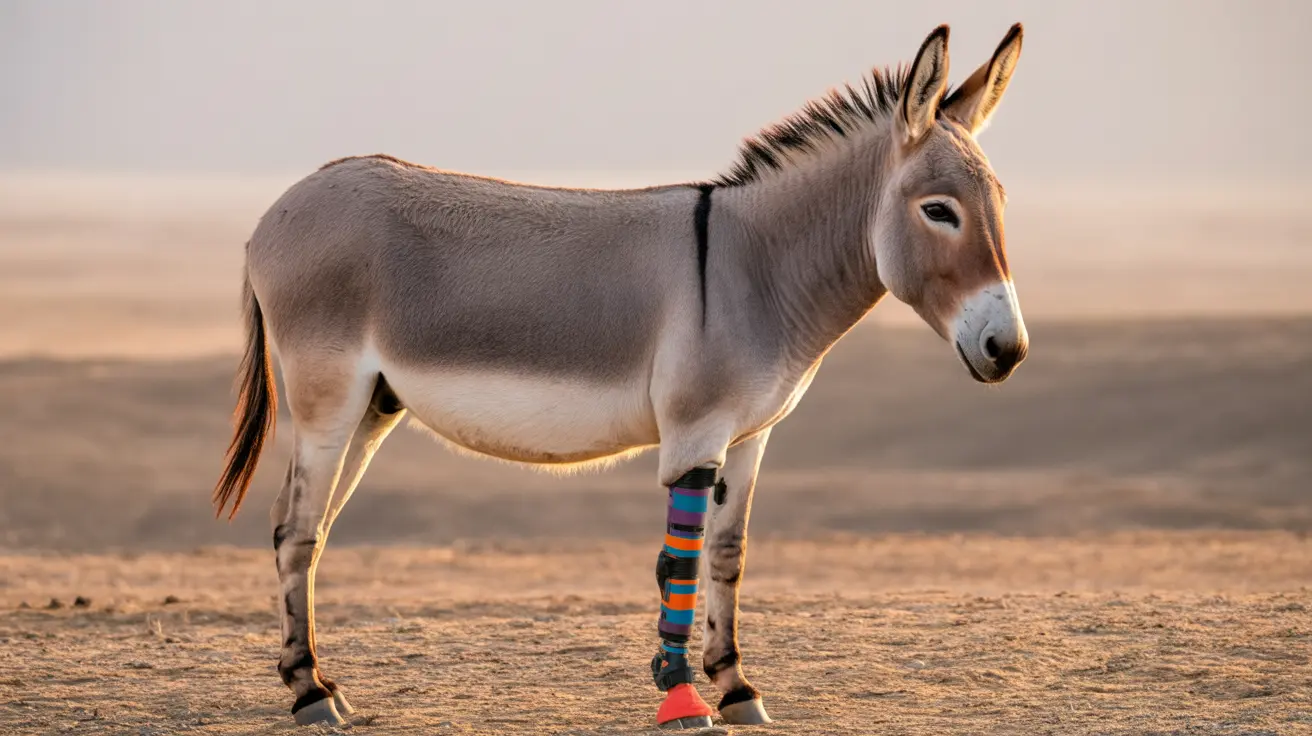Why Do Cats Eat Wool? Understanding and Managing This Dangerous Behavior
If you've ever discovered your favorite wool sweater riddled with holes or caught your feline friend chewing on a woolen blanket, you're not alone. Many cat owners struggle with this puzzling and potentially dangerous behavior. Understanding why cats eat wool is crucial for protecting both your belongings and, more importantly, your cat's health.
Wool-eating in cats is actually a form of pica—a compulsive disorder where cats consume non-food items. This behavior can range from innocent suckling on soft fabrics to dangerous ingestion of wool fibers that can cause life-threatening intestinal blockages. While some breeds are more predisposed to this behavior than others, any cat can develop wool-eating habits, making it essential for all cat owners to understand the causes, risks, and management strategies.
In this comprehensive guide, we'll explore the underlying reasons behind wool consumption, identify the serious health risks involved, and provide you with practical solutions to protect your cat while preserving your woolen items.
Understanding Pica: The Root of Wool-Eating Behavior
Pica is defined as the behavior of eating or sucking non-food materials, and wool is one of the most commonly targeted items. This obsessive-compulsive disorder can manifest as early as four months of age in kittens but typically surfaces after the cat reaches one year old. The behavior encompasses not just wool consumption but may extend to other materials like paper, plastic, shoelaces, and even cat litter.
What makes wool particularly attractive to cats with pica is its texture and composition. The soft, fibrous nature of wool may remind cats of their mother's fur, triggering suckling instincts. Additionally, wool contains lanolin, a natural substance that some cats find appealing. This combination of texture and taste creates a powerful draw for susceptible felines.
The Compulsive Nature of Wool-Eating
Unlike occasional exploratory chewing, wool-eating in cats with pica is compulsive and repetitive. Cats may actively seek out woolen items, even when they're being worn by their owners. This persistent behavior often escalates over time, with cats becoming increasingly focused on finding and consuming wool fibers.
Genetic Predisposition: Why Certain Breeds Are More Susceptible
Research has identified a clear genetic component to wool-eating behavior, with certain breeds showing significantly higher rates of pica. Oriental cat breeds, particularly Siamese cats, are at the highest risk for developing wool-sucking and eating behaviors. Other breeds commonly affected include Balinese, Tonkinese, Burmese, and Oriental Shorthairs.
The genetic predisposition in these breeds is so well-established that responsible breeders often screen for pica behaviors and avoid breeding cats that exhibit wool-eating tendencies. This hereditary component suggests that the behavior may be linked to specific neurological or behavioral traits that have been inadvertently selected for in these breeding lines.
Beyond Breed: Individual Risk Factors
While breed plays a significant role, individual cats of any breed can develop wool-eating behaviors. Factors that increase risk include early weaning, where kittens separated from their mothers before 12 weeks of age may retain strong suckling instincts, and traumatic experiences that trigger stress-related compulsive behaviors.
The Serious Health Risks of Wool Consumption
The dangers of wool-eating extend far beyond property damage. When cats ingest wool fibers, these materials can accumulate in the digestive system and create potentially fatal intestinal blockages. Unlike natural prey items that cats are designed to digest, wool fibers cannot be broken down by feline digestive enzymes and may form dense masses in the stomach or intestines.
Emergency Warning Signs
Cat owners must be vigilant for signs of intestinal obstruction, which can develop rapidly and require immediate veterinary intervention. Warning signs include:
- Repeated vomiting, especially frothy bile
- Retching or gagging without producing anything
- Pawing at the mouth
- Lethargy and low energy
- Loss of appetite or refusal to eat
- Constipation or straining in the litter box
- Diarrhea
- Increased vocalization or signs of pain
These symptoms require immediate veterinary attention, as intestinal obstructions can be life-threatening and often require emergency abdominal surgery to remove the blockage.
Underlying Causes: Why Cats Develop Wool-Eating Behaviors
Nutritional Deficiencies and Dietary Factors
One of the primary drivers of wool-eating behavior is dietary deficiency, particularly a lack of adequate fiber. Cats with insufficient fiber in their diets may instinctively seek out fibrous materials like wool to satisfy their nutritional needs. Some cats with anemia may also engage in pica behaviors, attempting to obtain minerals from non-food sources.
The natural composition of wool, containing lanolin and other organic compounds, may trigger feeding responses in cats with specific nutritional gaps. This biological drive explains why simply removing access to wool may not be sufficient—the underlying nutritional need must be addressed.
Psychological and Environmental Triggers
Stress plays a significant role in the development and persistence of wool-eating behaviors. Environmental changes such as moving to a new home, changes in family composition, or alterations to daily routines can trigger compulsive behaviors in sensitive cats. These cats may use wool-sucking and eating as a self-soothing mechanism to cope with anxiety and stress.
Boredom and lack of mental stimulation also contribute to pica development. Cats are natural hunters with complex behavioral needs, and when these needs aren't met through appropriate environmental enrichment, they may redirect their energy toward inappropriate objects like wool items.
Early Life Experiences
Kittens that experience abrupt or premature weaning are at higher risk for developing wool-eating behaviors. The strong instinct to suckle, when interrupted too early, may persist into adulthood and manifest as wool-sucking or eating. This explains why the behavior often focuses on soft, fabric materials that may remind cats of their mother's fur.
Comprehensive Management Strategies
Dietary Modifications and Nutritional Support
Addressing potential nutritional deficiencies is often the first step in managing wool-eating behavior. Veterinarians may recommend switching to high-fiber diets or adding specific supplements to address underlying nutritional needs. Effective dietary strategies include:
- High-fiber therapeutic foods designed for cats with digestive issues
- Plain canned pumpkin added to regular meals (small amounts)
- Fiber supplements as recommended by veterinarians
- Hairball formula foods that provide additional fiber
- Fresh alternatives like small amounts of cooked vegetables
Some veterinarians also recommend vitamin and mineral supplements to address potential deficiencies that may be driving the compulsive behavior.
Environmental Management and Deterrents
Preventing access to wool items is crucial for managing this behavior. Effective strategies include storing wool clothing in closed drawers or behind closet doors, using cotton bedspreads over wool blankets, and securing wool items away from areas where cats spend time.
Deterrents can also be effective when used consistently. Safe options include applying citrus juice, pepper, menthol, or eucalyptus oil to fabric edges. However, these deterrents must be reapplied regularly and should be tested for safety before widespread use.
Behavioral Enrichment and Alternative Outlets
Providing appropriate outlets for natural behaviors is essential for reducing wool-eating tendencies. Effective enrichment strategies include:
- Interactive puzzle feeders that stimulate hunting behaviors
- Regular play sessions with fishing pole-type toys
- Rotating toy selection to maintain novelty
- Cat grass and catnip as safe chewing alternatives
- Climbing structures and scratching posts
- Safe outdoor enclosures when possible
Professional Treatment Options
For severe cases, veterinary intervention may be necessary. Medical treatments can include anti-anxiety medications or antidepressants like Prozac®, though these medications may take months to show effects and should only be used under veterinary supervision. Some cats benefit from referral to veterinary behaviorists or certified cat behavior consultants for specialized intervention programs.
Home Safety and Prevention Strategies
Creating a cat-safe environment is essential for preventing wool ingestion incidents. This involves systematically removing or securing potential hazards throughout the home. Key areas to address include bedrooms, where wool clothing and blankets are commonly stored, living areas with wool furniture or decorative items, and laundry areas where wool items might be temporarily accessible.
Rotation and Monitoring Systems
Implementing a rotation system for deterrents can prevent cats from becoming accustomed to specific scents or textures. Additionally, monitoring systems—such as security cameras or motion detectors—can help owners identify when and where wool-eating behaviors occur, enabling more targeted interventions.
When to Seek Veterinary Help
While mild wool-sucking behaviors might be manageable through environmental changes alone, persistent wool-eating requires professional veterinary assessment. Immediate veterinary attention is necessary if cats show any signs of intestinal distress or if the behavior escalates despite intervention attempts.
Long-term management often requires ongoing veterinary support to monitor the cat's health, adjust dietary recommendations, and modify treatment approaches as needed. Regular check-ups can help detect early signs of complications and ensure that management strategies remain effective.
Behavioral Training and Correction Techniques
Successful behavioral modification requires patience and consistency, often taking over a year to achieve significant results. Effective correction techniques focus on positive redirection rather than punishment, as stress and fear can worsen compulsive behaviors.
When catching a cat in the act of wool-chewing, owners should calmly remove the cat from the situation and redirect attention to appropriate alternatives like cat grass or approved chewing toys. Consistent "No" commands, followed immediately by positive redirection, can help establish new behavioral patterns over time.
The Importance of Consistency
All family members must participate in behavioral modification efforts for them to be successful. Mixed messages or inconsistent responses can confuse cats and slow progress. Creating a household protocol for responding to wool-eating incidents ensures that everyone contributes to the training process.
Frequently Asked Questions
Q: Is wool-sucking without swallowing dangerous?
While wool-sucking without ingestion is less immediately dangerous than eating wool, it still requires attention. Cats that engage in this behavior may eventually progress to actually consuming the material, and the underlying causes—such as stress, boredom, or nutritional deficiencies—still need to be addressed to prevent escalation.
Q: Can I use mothballs to deter my cat from wool items?
Mothballs can be toxic to cats and are not recommended as a deterrent. Instead, use safer alternatives like citrus scents, eucalyptus oil, or commercial pet-safe deterrent sprays. Always test any deterrent in a small area first and monitor your cat for adverse reactions.
Q: How long does it take to see results from dietary changes?
Dietary modifications typically take 2-4 weeks to show initial effects, though some cats may respond more quickly. Complete behavioral changes can take several months, especially when combined with environmental management and behavioral training. Consistency is key to achieving lasting results.
Q: Should I remove all wool items from my home?
While complete removal isn't always necessary, securing wool items is essential during the management phase. Items can often be reintroduced gradually once the behavior is under control, though some severely affected cats may require permanent restrictions on wool access.
Q: Are there any breeds I should avoid if I'm concerned about wool-eating?
Oriental breeds, particularly Siamese, Balinese, Tonkinese, and Burmese cats, have higher rates of wool-eating behaviors. However, individual personality and early life experiences are also important factors. If you're concerned about this behavior, discuss it with potential breeders and consider adult cats whose behavioral patterns are already established.
Q: Can stress from training make the wool-eating behavior worse?
Yes, punitive training methods or high-stress correction techniques can worsen compulsive behaviors. Focus on positive redirection, environmental management, and addressing underlying stressors rather than punishment-based approaches. If you're unsure about training methods, consult with a veterinary behaviorist.
Q: What should I do if my cat has already swallowed wool?
Monitor your cat closely for signs of intestinal obstruction, including vomiting, lethargy, loss of appetite, or changes in bathroom habits. Contact your veterinarian immediately if any concerning symptoms develop. Even if no immediate symptoms appear, inform your vet about the incident during your next visit.
Conclusion
Understanding why cats eat wool is the first step in protecting your feline companion from this potentially dangerous behavior. While pica and wool-eating can be challenging to manage, a comprehensive approach combining dietary modifications, environmental management, behavioral enrichment, and professional veterinary support can effectively reduce or eliminate these behaviors in most cats.
Remember that wool-eating is not a behavioral problem that cats can simply "outgrow"—it requires active management and ongoing attention. By implementing the strategies outlined in this guide and working closely with your veterinarian, you can help ensure your cat's safety while maintaining a harmonious household. Early intervention and consistent management are key to successfully addressing this complex behavior and keeping your wool-loving feline healthy and happy.






